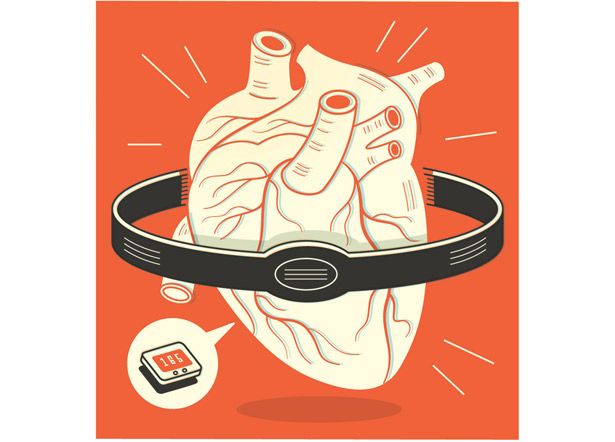There's a healthy shift in the endurance world right now toward lower heart rate training and increasing fat utilization. Quite a bit of information is available on health issues being linked to overtraining as well as going too hard too often leading athletes to question the intensity of their workouts. There's also the "preferred fuel component" which basically means "feed it what you want it to burn". If you want to have the ability to burn fat for fuel, you'll need to eat in a way that promotes the fat utilization. In this article I'm going to provide useful information about training at lower heart rates and improving your fat burning ability.
Three Steps
1. Establish your training zones
2. Modify your diet so you can increase fat utilization during exercise
3. Plot your course and polarize your workouts
Step 1: Establish your training zones
Your first objective is to determine your aerobic threshold (AeT). Don't confuse this with your anaerobic threshold (AT) which is a different, although useful, data point as well. There are many training methods out right now and this is a hot topic, but I'm not fond of using formulas to determine heart rate zones. This data is the foundation of your success. Use science, avoid guesswork.
The best way to find your AeT, AT and corresponding heart rate zones is by having a VO2 test performed. This includes assessing your respiratory rate, oxygen uptake, and heart rate. The goal is not to find your VO2 max and compare it to others, but rather to find the point at which you begin to experience an increase in blood lactate levels (AeT) as well as the point where you can no longer use fat for fuel (AT). Combined, those two points of data allow you to create effective and efficient individualized training zones.
Step 2: Modify Your Diet
If you want to burn fat for fuel, you need to be sure you're giving your body the chance to do just that. Limiting your sugar and carbs in general is key. If your tank is always full of glycogen from keeping yourself topped off with a hefty supply of carbs, your body will take the easy way out and burn that as it's first choice. If you deprive it, you will allow it to run on both reserve glycogen but also primarily fat if you're training at the right intensity. Your effort is extremely important here because as you go harder, you decrease your ability to use fat for fuel. It takes both limiting your carb intake and keeping your effort low.
Fasted workouts of low intensity are also key. I'm not suggesting you have to be in ketosis. You just have to limit what you give your body to burn. Typically a diet that's about 50% fat, 25% protein and 25% carbs will do the trick. But timing is equally important. You can't eat a ton of carbs and expect your body to burn fat. A good example would be to wake up, don't eat, and go workout at a heart rate that's right around or below your AeT. Fueling during the workout will depend on how adapted you are to this type of training.
Step 3: Polarize Your Workouts
Polarizing your workouts simply produces better results. This means training either at a very low intensity or a very high intensity but cutting out the moderate workouts. You can equally define this as training below your AeT and above your AT, leaving a lonely mid-zone moderate intensity region in which most of us are guilty of spending too much time. This requires knowing how to juggle the amount of easy/hard days so can avoid overtraining. The 80/20 rule works well for most: 80% easy and 20% hard. Above all, listen to your body and decrease that 20% if you're not recovering well enough.
The easy days are where you will focus on improving your fat-burn ability. When you have your hard days, don't worry about fat burn. At the higher intensities above your AT, you won't be utilizing fat for fuel and will compromise the workout if you don't have adequate glycogen on board. A simple fix is to start consuming 25-50 grams of dextrose at the start of your workout and drink throughout the session. You won't need to go out for a pizza and beer post workout, the dextrose will suffice.
New Goals
Give yourself new goals of becoming efficient and resilient. Think of this as a project where you're rebuilding a machine to operate with low cost and get high miles per gallon. More fat utilization means less fuel you have to be dependent on during long events. It also means less gastric distress possibilities. Lower heart rates mean you're not stressing your ticker out as much. All in all you will be creating a healthier athlete with longevity in mind.
Happy training,
Joe


